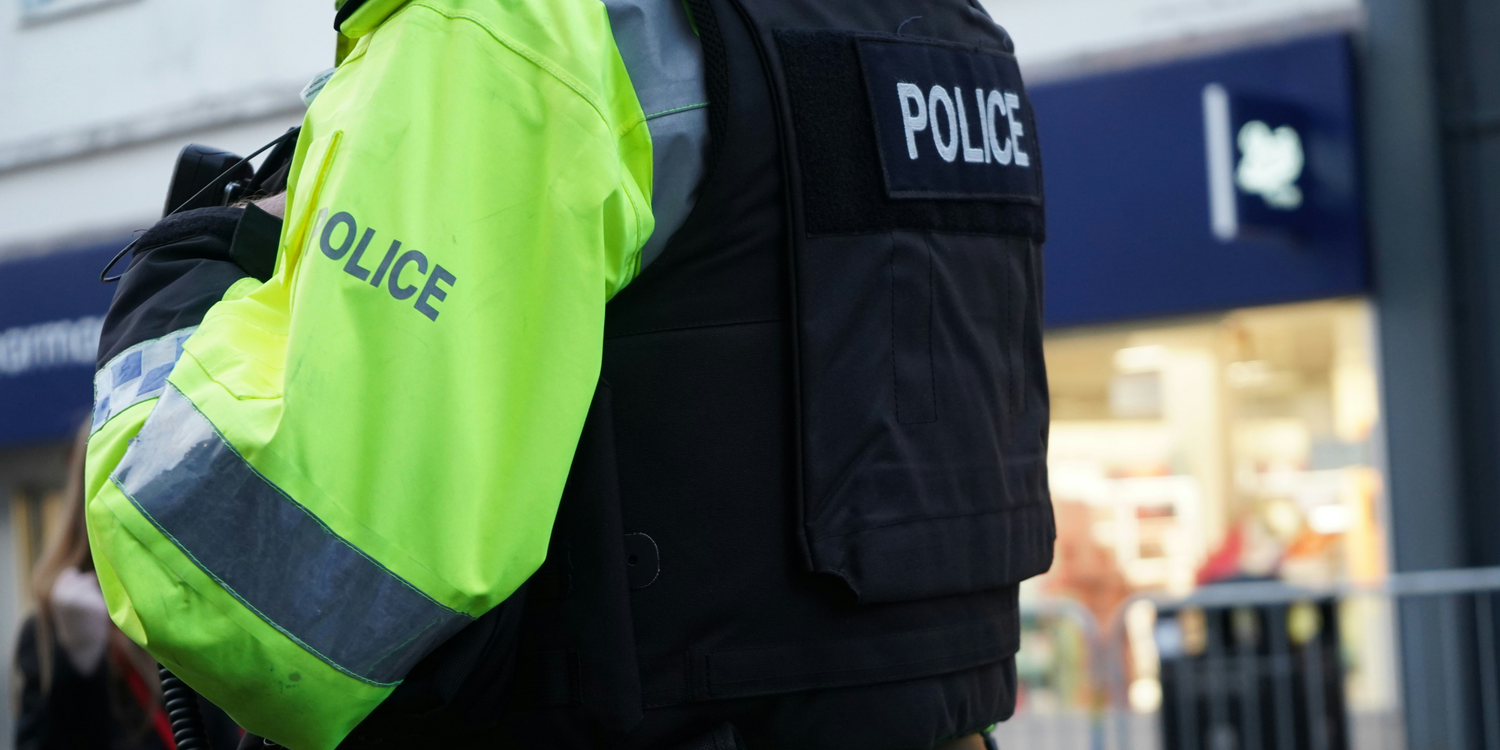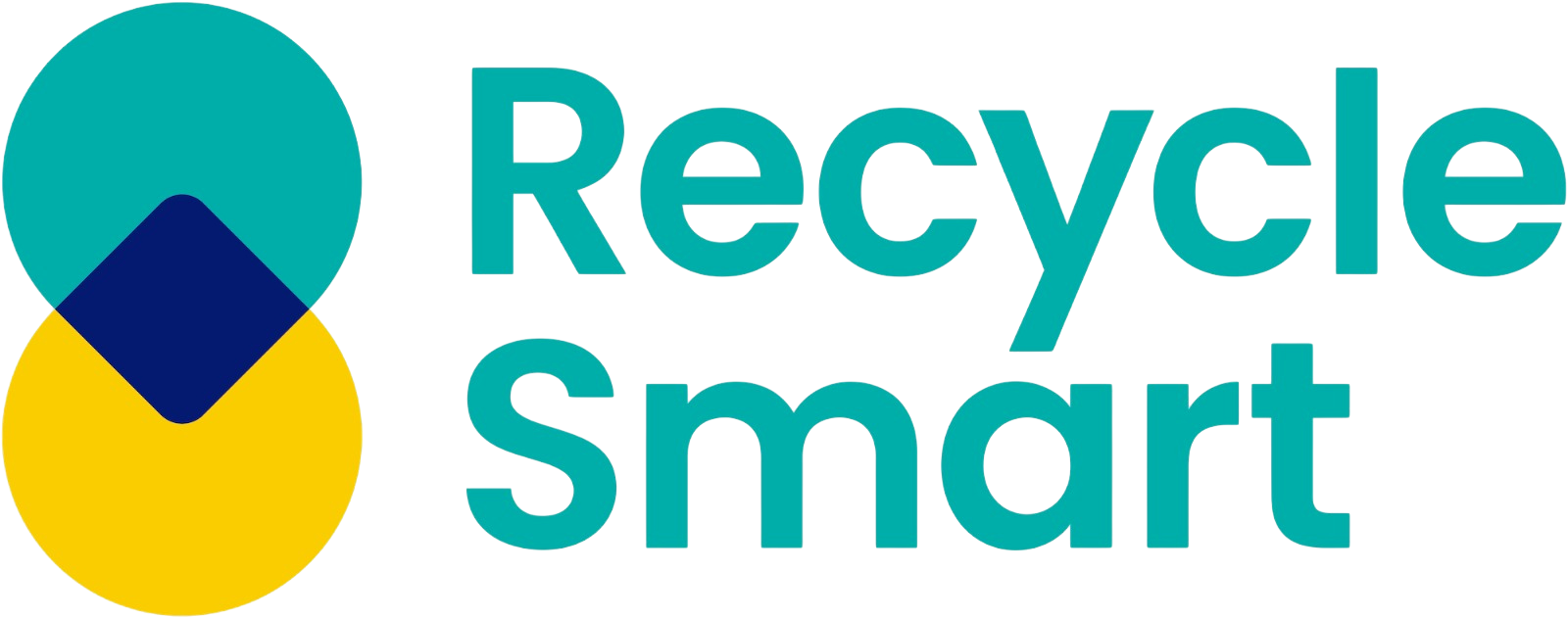Why Join Quit Hero?
One Stop, Quit Shop
All You Need, All in One Place – Start your quit journey the easy way.
12-Month Script
Doctor-approved prescriptions on the house.

Australia’s Biggest Range
We are proud to stock the biggest range of TGA-notified, pharma-grade nicotine management products right to your door.
Price Match Promise
Seen it cheaper? We’ll match any eligible pharmacy item.
Heroic Quits Start Here
Online Assessment
Answer a few questions about your smoking and medical history.
Get Notified
Our medical team will notify you via email once the assessment has been reviewed*. (Review within 24 hours.)
Express Delivery
Access the pharmacy portal and order your therapy. Express delivery Australia-wide. (Free shipping on orders over $150.)
Quit Hero Voices

Lisa became a Quit Hero to breathe easier and take back her health.

Paul became a Quit Hero to regain his fitness and breathe freely again.

Maria became a Quit Hero to save money and finally take control of her smoking.

Dhruvo became a Quit Hero to feel healthier and enjoy life to the fullest.
Apply For A 12 Month Free Script
Complete the online medical assessment and answer a few questions about your health and smoking history.
Already Have Script?
No dramas, we have you covered!
If you have a prescription from another clinic and wish to use the Quit Hero pharmacy portal, just create a patient account and upload your eScript. Our medical team will review it, and once approved, you'll be able to access your portal to order your treatment.
-
-
What’s really in a vape? why unregulated products make quitting harder — and less safe
Recent investigations into disposable and illegally supplied vaping products have raised serious concerns about what some people are unknowingly inhaling. Laboratory testing has identified the pres...3 Minute ReadView Article -
Are australia’s vaping laws working? what the latest data tells us
Australia has some of the strictest vaping regulations in the world, introduced to reduce nicotine addiction and protect young people. But new data is raising an important question: are these laws ...4 Minute ReadView Article -
How to quit smoking the easy way in 2025
Many Australians are exploring practical and supportive ways to make the process easier. With more resources available than ever before, from nicotine replacement therapies to regulated vaping prod...4 Minute ReadView Article -
A step-by-step guide to quit smoking for good
Quitting smoking is one of the best decisions you can make for your health and well-being. But as anyone who’s tried will tell you, it’s not easy. Every journey is different, and understanding the ...4 Minute ReadView Article -
Major crackdown in queensland: nearly $9 million in illegal vapes and tobacco seized
A major joint operation in southeast Queensland has resulted in the seizure of almost $9 million worth of illegal vapes, cigarettes, and loose tobacco. The coordinated effort involved the Therapeut...2 Minute ReadView Article -
Your journey to a smoke-free life: tips and services
Quitting smoking is one of the most powerful steps you can take to reclaim your health and wellbeing. While it can feel challenging at first, understanding the right tips to help you quit smoking c...4 Minute ReadView Article -
Start fresh: quit smoking today with guidance that works
It is essential to quit smoking for the sake of your health. You're not the only one thinking of quitting smoking. Millions in Australia have taken this path. You may not know, but your heart rate ...5 Minute ReadView Article -
Mastering cravings: your evidence-based guide to taking control
Quitting smoking is more than breaking a habit—it’s about understanding your mind and taking control of your cravings. At Quit Hero, we know that cravings can feel overwhelming, but with the right ...5 Minute ReadView Article -
What happens to your body after you quit smoking?
It is essential to quit smoking for the sake of your health. Your body starts to heal from the moment you stop smoking in unexpected ways. What happens exactly after you stop smoking? You can stay ...5 Minute ReadView Article -
Cbt and mindset: the psychology behind quitting smoking
Quitting smoking isn’t just about nicotine — it’s about rewiring the mind. While nicotine replacement therapies and vaping devices help manage physical withdrawal, your mindset determines long-term...3 Minute ReadView Article -
“candy store” selling illegal vapes near schools in wa: protecting children
Illegal vapes are being sold near schools in regional Western Australia. Learn why enforcement and community action are crucial to protect children. Illegal Vapes in Regional WA Reports have highli...2 Minute ReadView Article -
Tga and victoria police crack down on illegal vapes in melbourne
Victoria Police and the Therapeutic Goods Administration (TGA) have launched a major operation targeting illegal vapes in Melbourne, seizing products valued at over $40,000, including more than 24,...2 Minute ReadView Article -
From smoker to runner: how exercise supports a smoke-free life
Making the decision to quit smoking is one of the most powerful steps you can take for your health. Many Australians who have used online nicotine management pharmacy services for support have also...4 Minute ReadView Article -
Rewiring your brain: the science of addiction and quitting
Breaking free from smoking is not just about willpower. It is about understanding how your brain has been shaped by addiction and learning how to reshape it with healthier patterns. Many Australian...4 Minute ReadView Article -
Overcoming fear of failure when trying to quit smoking
Quitting smoking is a big step, and it is normal to feel unsure or anxious about whether you can succeed. Acknowledging these fears and understanding that setbacks are part of the process can help ...4 Minute ReadView Article -
Smoking vs vaping: which is the safer choice?
Quitting smoking is a journey that many Australians are navigating, and finding safer alternatives can make the process smoother and more manageable. Understanding the tools and options available i...5 Minute ReadView Article -
How quitting smoking boosts your sleep quality and energy levels
Quitting smoking is a life-changing decision that impacts your body in countless positive ways. Many Australians exploring supportive options such nicotine management devices have noticed improveme...5 Minute ReadView Article -
How to prepare mentally for a smoke-free life
Quitting smoking is more than just putting out your last cigarette. It’s a shift in mindset, a fresh start, and one of the most empowering choices you can make for your health. While nicotine repla...5 Minute ReadView Article -
How to stay smoke-free during stressful times
Stress is part of life. Whether it’s a hectic work schedule, financial pressure, relationship struggles, or unexpected challenges, these tough moments can test your resolve, especially if you’re tr...4 Minute ReadView Article -
Simple habits to help you quit smoking permanently
Quitting smoking is one of the bravest and most rewarding decisions you can make for your health and future. While it may feel overwhelming at times, creating small daily habits can make the journe...4 Minute ReadView Article -
Quit smoking today: easy ways to stay smoke-free
If you’ve decided to quit smoking, you’ve already taken the most important step toward reclaiming your health. The journey may feel overwhelming at first, but with the right strategies and support,...4 Minute ReadView Article -
Quitting smoking in your 20s, 30s, 40s or 50s: what changes?
Thinking about quitting smoking, but wondering if your age makes a difference? It absolutely does, but not in the way you might think. No matter how old you are, quitting is always a win. The key i...4 Minute ReadView Article -
Queensland cracks down on illegal tobacco and vapes with nation-leading laws
The Queensland Government has introduced new laws aimed at stamping out illegal tobacco and vape sales, strengthening protections for communities and children. Under the Tobacco and Other Smoking P...2 Minute ReadView Article -
Craving control: how to beat the urge to smoke
It’s totally normal to feel like having a smoke, even if you haven’t had one in days or weeks. Cravings are one of the toughest parts of quitting, and they can sneak up on you when you least expect...4 Minute ReadView Article -
Top strategies to quit smoking and improve your health
Quitting smoking might feel like climbing a mountain, but every step you take makes a real difference to your health and overall quality of life. Did you know that your body starts to heal just 20 ...4 Minute ReadView Article -
Queensland boosts crackdown on illicit tobacco and vaping
Queensland’s latest Health Budget has set a new record, and part of that investment is going straight into fighting the illegal tobacco and vape trade. The Crisafulli Government has announced $12.7...2 Minute ReadView Article -
Our lungs, heart & skin: how smoking slowly breaks you down
Do you ever wonder what smoking really does to your body? Most people know it’s bad, but the details can be surprising and a little scary. Smoking doesn’t just hurt your lungs. It affects your hear...4 Minute ReadView Article -
Why smoking impacts your skin, smell, and confidence
The impact of Smoking is often limited to respiratory and heart effects; however, the ramifications extend well beyond. Do you recall why smokers look like they are aging faster than their actual a...4 Minute ReadView Article -
How smoking sabotages your fitness, energy, and relationships
Ever wondered why climbing a few stairs feels harder than it should? Or why your workouts don’t give you the boost they used to? If you smoke, chances are your habit is slowing you down. Smoking do...4 Minute ReadView Article -
Living better without cigarettes: lifestyle changes
Quitting smoking is a big step. But it’s not just about putting down the last cigarette. It’s about building a new, healthier life. Many people wonder what comes next. How do you fill the gaps? How...5 Minute ReadView Article -
What happens to your body when you quit smoking, day by day
Quitting smoking is a big decision. For many, it’s one of the hardest things they’ll ever do. But what really happens inside your body when you stop? The changes start almost right away. Some are q...5 Minute ReadView Article -
$70 million illicit tobacco and vape bust shines spotlight on organised crime
In one of Queensland’s largest-ever crackdowns on the illicit tobacco trade, authorities have seized more than $70 million worth of illegal tobacco, cigarettes, and vaping products north of Brisban...2 Minute ReadView Article -
Why smokers face higher risks of stroke and heart disease
Smoking isn’t just a habit—it’s a serious health risk. Most people know smoking damages your lungs, but did you know it also significantly increases your chances of heart disease and stroke? Unders...2 Minute ReadView Article -
Nicorette quickmist now approved for vaping dependence
Australia has just reached an important milestone in tackling nicotine addiction. The Therapeutic Goods Administration (TGA) has expanded approval of Nicorette QuickMist – a fast-acting nicotine re...2 Minute ReadView Article -
Queensland’s 2025 efforts to combat illicit smoking and vaping products
Queensland is stepping up its efforts in 2025 to tackle the ongoing public health risks associated with tobacco and vaping, particularly focusing on the supply of illicit products. These efforts ai...4 Minute ReadView Article -
How smoking affects the immune system and slows healing
Most people know smoking isn’t great for your lungs or heart, but did you know it can also weaken your immune system and slow down your body’s natural healing? Whether you smoke yourself or care ab...5 Minute ReadView Article -
Breaking the habit: top tips to help quit smoking
Quitting smoking is never easy. It’s more than just stopping a habit, it’s about changing routines, fighting cravings, and learning new ways to cope. If you’re reading this, you may be considering ...4 Minute ReadView Article -
Nsw introduces tobacco licensing scheme to strengthen smoking laws and cancer prevention
As of 1 July 2025, New South Wales has taken a major step forward in the fight against tobacco-related harm by introducing a new tobacco licensing scheme. This reform means that all retailers and w...3 Minute ReadView Article -
New vape product standards now in effect: what you need to know
As of 1 July 2025, the Therapeutic Goods Administration (TGA) has officially implemented stricter safety and quality standards for therapeutic nicotine vaping products in Australia. These updates a...3 Minute ReadView Article -
7 simple changes that make quitting smoking easier
Quitting smoking is a big deal. It’s not just about stopping a habit. It’s about facing your fears, changing routines, and finding new ways to cope with them. You might worry about cravings, failin...4 Minute ReadView Article -
The silent damage: how cigarettes affect your brain and mood
Have you ever wondered what cigarettes really do to your brain? Most people know about the damage to the lungs and the risk of cancer. But the way smoking affects your mind, your memory, and your m...5 Minute ReadView Article -
Evaluating vaping as a smoking cessation tool: insights from new clinical trial
A new clinical trial conducted by UNSW’s National Drug and Alcohol Research Centre (NDARC) has found nicotine vapes to be significantly more effective than traditional nicotine replacement therapie...3 Minute ReadView Article -
A step-by-step guide to quit smoking clinics in australia
If you've ever felt like quitting smoking is more of a maze than a journey, you're not alone. Many Australians struggle to find the proper support at the right time. That’s where quit clinics in Au...5 Minute ReadView Article -
How to recycle vapes safely in australia
Vapes and their accessories may seem small, but they pack a big environmental punch. Most contain lithium batteries, metals, and plastic, making them hazardous to toss in your general waste or regu...2 Minute ReadView Article -
New vape regulations are now in effect from 1 july 2025
The long-anticipated changes to Australia’s vaping regulations are now in effect. As of 1 July 2025, only therapeutic nicotine vaping products that meet the strengthened Therapeutic Goods Administr...3 Minute ReadView Article -
Australia’s vape scene 2025: open and closed pod systems and more
If you’ve tried to navigate the ever-changing vape market in Australia lately, you’re not alone. With tightening regulations and new product types emerging, understanding what’s legal, safe, and ri...4 Minute ReadView Article -
Vape prices in australia: how much do vapes pen really cost?
Vapes in Australia vary in cost depending on legality, quality, brand, and prescription-based accessibility. In 2025, as the government enforces tighter regulations on vaping products, particularly...4 Minute ReadView Article -
First-line vs. second-line quit smoking treatments: what’s the difference?
When it comes to quitting smoking, knowing your options makes all the difference. You’ve probably heard of nicotine patches or even vaping but did you know there are two official categories of quit...3 Minute ReadView Article -
Pure nicotine vape vs regular vape: what’s the difference?
If you’re exploring options to quit smoking and looking into eliquid Australia products, you might have heard of “pure nicotine vapes” or unflavoured e-liquids. But what does that actually mean? An...5 Minute ReadView Article
FREQUENTLY ASKED QUESTIONS
Quit Hero is a comprehensive Australian online medical service specialising in smoking cessation and nicotine addiction management. Through a secure digital platform, patients can access consultations with TGA-authorized doctors, receive personalized treatment plans, and obtain electronic prescriptions for approved cessation therapies—including nicotine replacement products. Quit Hero’s integrated approach ensures nationwide accessibility, evidence-based care, and ongoing support for individuals committed to quitting smoking.
We partner with Australian independent pharmacy, Quit Med, located in Queensland to dispense our products.
No, Quit Hero partners with a pharmacy to dispense their pharmaceutical products.
Yes, Quit Hero employs doctors. If you are a registered doctor based in Australia, please contact hello@quithero.com.au to hear about our employment opportunities.
All of our doctors are registered and based in Australia.
If you are experiencing a medical emergency, please contact your local emergency services immediately (dial 000 if in Australia).
Please report any adverse events to your doctor or pharmacist immediately. Pharmacists are required to report adverse events to the Therapeutic Goods Administration (TGA).
Smoking is the leading preventable cause of death and disease in Australia. Tobacco smoke contains more than 7,000 chemicals, including at least 69 known carcinogens.
Smoking harms nearly every organ of the body, causing many diseases and reducing the health of smokers in general.
Tobacco use is responsible for a global pandemic of death and disease, causing one in 10 deaths worldwide from both direct tobacco use and exposure to
second-hand smoke.
While the less you smoke the better, light smoking and social smoking still increase the risks of heart disease, lung cancer, cataract, and other conditions.
When it comes to quitting smoking for good, everyone is different. Some light and intermittent smokers may have an easier time quitting than heavy smokers, while others find it just as difficult.
There is no better time to quit smoking than today!
You are never too young or too old to quit smoking. Quitting smoking has immediate as well as long-term health benefits for men and women of all ages, reducing risks for diseases caused by smoking and improving health in general.
Within a few months of quitting smoking, the cilia in the lungs and airways improve at sweeping mucus and debris from the lungs (as long as irreversible damage has not taken place). Lung function improves and the presence and severity of respiratory symptoms reduce.
Quitting smoking even at age 60, 70, or beyond will have many health benefits and improve your quality of life and expectancy.
Nicotine is an addictive substance that makes quitting smoking very challenging. That is why most attempt to quit smoking "cold-turkey" and without support fail.
A 2019 survey showed that 8 million Australians smoke, with 81% of smokers having made a quit attempt. Whilst statistics show a very high level of quitting activity among smokers, the rate of successful quitting is low because of the high relapse rate, with 40% of smokers making more than 3 attempts to quit.
A substantial body of research has established that quitting smoking has immediate as well as long-term health benefits for men and women of all ages, reducing risks for diseases caused by smoking and improving health in general.
Within a few months of quitting smoking, the cilia in the lungs and airways improve at sweeping mucus and debris from the lungs (as long as irreversible damage has not taken place). Lung function improves and the presence and severity of respiratory symptoms reduce.
Read more about WHAT HAPPENS WHEN YOU QUIT SMOKING
Based on the consumption of one 25 pack of cigarettes a day priced at $36, the cost of smoking adds up to:
$252 per week = $1,095 per month = $13,140 per year.
Patients can apply for a prescription by filling out the online medical questionnaire. Our medical team reviews your questionnaire within the same day.
The doctor will get in contact if any clarification is needed. All our doctors are TGA authorized Nicotine Prescribers and are passionate about helping you in your Quit Smoking journey.
Every Australian State and Territory can access Quit Hero's services.
Please note, our doctors are based in Brisbane, and appointment times are set as AEST (Australian Eastern Standard Time) on our booking platforms. Keep this in mind when booking from anywhere else in Australia.
Shipping: We can ship your order anywhere in Australia.
States and Territories: QLD, NSW, VIC, SA, TAS, NT, WA, ACT
If you don't qualify for a Nicotine prescription you are entitled to a full refund of the prescription fee.
The prescription is free of charge.
Absolutely! We believe in empowering you to find the support you need. Upload your script and our medical team will review it as quickly as possible. Patients with a valid script can browse products and purchase their therapy to have it shipped straight to their door.
We don’t offer product exchanges. However, you can return unused and unopened devices, pods, or coils for a refund. Please fill out this refund form: https://zfrmz.com.au/f2k0yZJ45oveyX836oln
From 1 October 2024, adults (18+) do not need a doctor prescription for vapes with nicotine concentrations of 20 mg/mL or less, and requiring pharmacy scripts. A doctor’s prescription is still required for higher concentrations or for those under 18. Quit Hero offers free prescriptions for eligible patients.
Your prescription will be valid for 12 months from the date of issuing.
We can direct you to our partner pharmacy where you will be given access to purchase your products.
If you feel that the dosage prescribed during the original consultation is not working well with your cravings, we encourage you tocontact usto organize a conversation with our doctors.
Personal importation scripts are not able to be used in Australia. We recommend you apply for a new prescription so that we can ensure it comply with legislation.
Of course! Upload your script and our medical team will review it quickly as possible. Patients with a valid script can browse products and purchase their therapy to have it shipped straight to their door.
Other than the addiction to the habit of smoking, cigarettes lead to actual physical dependence, which is why most quitting attempts fail. However, nicotine replacement therapy (NRT) can be an effective approach to quitting smoking by providing former smokers with a controlled dose of nicotine without the harmful chemicals contained in cigarettes. These methods allow people to break the smoking habits first and then gradually wean off the nicotine completely. Many studies have shown that using NRT can nearly double the chances of quitting smoking.
Non-prescription:
- Patches
- Gum
- Oral sprays
- Lozenges
- Counselling
- Hypnotherapy
- Acupuncture
Prescription only:
- Pharmacotherapy
- Nicotine vaping products*
*There are currently no nicotine vaping products approved by the Therapeutic Goods Administration (TGA) and registered in Australian Register of Therapeutic Goods (ARTG). Medicines that are not in the ARTG are known as 'unapproved' medicines.Unapproved therapeutic goods have not been evaluated for quality, safety, efficacy or performance.
To help you quit smoking, you should consider first-line nicotine replacement therapies such as patches or gum. However, should you find that these treatment options are ineffective or unsuitable for your needs, your doctor may consider prescribing pharmacotherapy or nicotine vaping products as part of your treatment plan to help you quit smoking.
Yes, vaping nicotine is legal in Australia however only pharmacies can dispense nicotine vaping to patients with a prescription, it is illegal for any other Australian retailers, including vape stores, to sell nicotine vaping products.
Vape stores will still be able to sell flavours and non-nicotine vaping products, including devices.
here are severe penalties for importing or possessing nicotine liquid without a prescription, including fines of over $10,000 in some states, or even prison time.
In Australia, liquid nicotine for DIY mixing is classified as a schedule 7 poison. This is because liquid nicotine can be highly toxic in its concentrated form and needs to be handled with due care.
You should treat nicotine as you would treat any other dangerous chemical, including:
- Wearing gloves
- Eye protection
- Working in a well-ventilated area
- Make sure that your work area is tidy and distraction-free.
Read more about NICOTINE SAFE HANDLING





















































